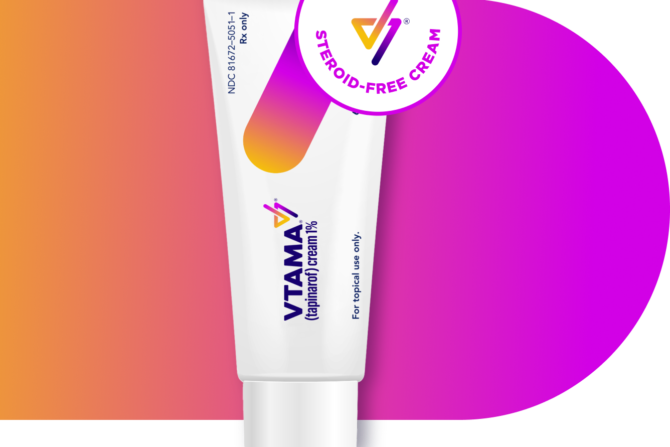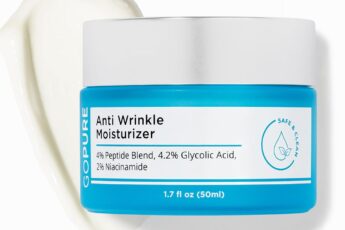If you’ve ever had eczema, you already know it’s not just about dry skin. It’s that mix of itch, heat, and irritation that somehow finds you even when you’ve done everything “right.” I’ve been there too — staring at a new cream, wondering if this one will finally calm things down or just leave another greasy film that rubs off on my clothes. That’s why when I first heard about VTAMA cream, I was curious but cautious. I didn’t want another promise in a tube. I just wanted something that felt gentle and actually worked with my skin, not against it.
And you know what? VTAMA cream felt different from the very first time I tried it.
It’s water-based, light on the skin, and absorbs quickly without that sticky residue you sometimes get. The texture alone made me pause — it didn’t feel heavy or oily. It just… disappeared into my skin like it belonged there. And that’s when I started paying attention.
Let’s talk about what makes this cream so special and how it could fit into your daily routine too.
Table of Contents
Key Takeaways
- If you’ve made it this far, here’s what I’d want you to remember about VTAMA cream:
- It’s light and water-based, so it absorbs fast and doesn’t feel greasy.
- It’s free from fragrances, parabens, and petroleum jelly, so your skin gets only what it needs.
- You only need to apply it once a day, and only on affected areas.
- Many people saw clearer skin and itch relief faster than expected — sometimes within a few days.
- It’s safe for sensitive skin areas and works by helping your skin rebuild its natural barrier.
What Makes VTAMA Cream Special
You can tell when a product was made with people in mind. That’s what stood out to me about VTAMA cream — everything about it feels intentional.
For starters, it’s water-based, which already makes a big difference. The texture feels smooth but never slippery. Most people who’ve used it — and I completely agree — say it’s easy to apply and absorbs fast. That alone can be a game changer when your skin is already sensitive.
And here’s something I love: it’s made to reduce irritation while still keeping your skin moisturized. It’s not trying to be flashy or overcomplicated. There’s no added fragrance, no parabens, no petroleum jelly, no gluten, and no PABA. Basically, it’s stripped down to what your skin actually needs.
If you’ve ever had to skip a product because it smelled too strong or left that greasy film that clings to your clothes, you’ll understand what a relief this feels like. There’s something comforting about knowing what you’re putting on your skin isn’t overloaded with stuff it doesn’t need.
The first time I used it, I remember thinking, this feels… clean. Not sterile or clinical — just gentle. Like it’s there to help, not to remind you of the problem.
How to Apply VTAMA Cream the Right Way
You don’t need a complicated routine to make VTAMA cream work. I like that about it. It’s simple — once a day, thin layer, that’s it.
Here’s how I do it:
I squeeze a small amount (not too much, because a little goes a long way) and apply it only where my eczema flares up. It’s easy to think “more is better,” but with this, less really is more. Then I wash my hands right after — unless it’s my hands I’m treating.
If someone’s helping you apply it — maybe a partner or a caregiver — they should wash their hands after too. And this part is important: don’t use it on skin that’s not affected. It won’t speed things up, and it might just waste a good product.
You also want to keep it away from your eyes, mouth, and any sensitive internal areas. It’s meant to work on the skin’s surface, not inside your body.
I remember the first week I started, I kept it next to my mirror — so I’d see it while getting ready. It became part of my morning rhythm: cleanse, pat dry, VTAMA, breathe. It felt nice to finally have something easy to stick to.
Also Read: DMSO Cream: My Honest Experience with Dr. Robaina’s Formula
Why You Might Love VTAMA Cream
When I say this cream changed how I feel about my skin, I mean it. I used to wake up dreading how my arms or neck might feel — that mix of itch and tightness that seems to have no end. But with VTAMA, I started noticing small differences faster than I expected.
Let’s break down what it actually does.
Clearer Skin
In studies, people saw real results. Almost half — around 46% — achieved clear or almost clear skin after about eight weeks. That’s not a small number. And it wasn’t just random improvement; it was noticeable enough to be measured.
Now, I know stats can feel a bit cold. But when you’ve lived with eczema, you know even a slight change in how your skin feels can be huge. Seeing clearer skin after weeks instead of months? That’s the kind of progress that makes you exhale.
Rapid Itch Relief
Itch relief as early as day two. That’s what stood out to me when I first read about VTAMA. I remember thinking, day two? Really? But when I used it, I got it. The urge to scratch didn’t disappear instantly, but it started fading. That’s when you realize how much of your day itching used to steal from you.
Lasting Impact
Here’s the part that surprised me the most: people who achieved clear skin could actually stop using it and stay clear for about two and a half months. That says something. It means VTAMA doesn’t just soothe — it helps your skin stay calm even after you stop.
And if you’re curious, about 82% of people in one long-term study reached or maintained clear or almost clear skin at least once during a 48-week period. That’s a lot of people finding relief.
It’s not just about numbers, though. It’s about how it feels to look at your skin and not immediately brace for discomfort. That quiet kind of relief is what makes VTAMA stand out.

How VTAMA Cream Works Beneath the Surface
Now, this part gets a bit more scientific, but don’t worry — I’ll keep it simple.
The main ingredient in VTAMA cream is called tapinarof. Think of it as your skin’s personal coach. It helps your skin strengthen its barrier — that outer layer that keeps the good stuff in and the irritants out.
Here’s what I’ve learned about it:
Our skin has tiny receptors called aryl hydrocarbon receptors (or AhR for short). They help keep things balanced. When you have eczema, that balance gets thrown off — your barrier weakens, inflammation rises, and your skin can’t protect itself as well.
Tapinarof steps in to support those receptors, helping your skin restore what it’s lost. It encourages your skin to build back its barrier proteins — basically, the building blocks that keep it strong.
It also tones down inflammation, which is why the redness and irritation start to ease. And to top it off, it boosts antioxidant activity, helping your skin fight off stress and damage.
The science might sound heavy, but here’s how I think of it: it gives your skin the tools to heal itself naturally. You’re not forcing it; you’re supporting it. And that’s a big deal.
The Safety and Comfort of VTAMA Cream
Something that made me feel comfortable using VTAMA was knowing it mostly works within the skin. It doesn’t travel through your whole body, which makes it feel safer — especially if you’re using it often or over larger areas.
It’s also one of those rare creams that you can use on delicate spots like your face, neck, and folds without that burning or stinging you sometimes get. I used to avoid putting anything near my eyes or around my mouth, but with VTAMA, I didn’t have that sharp discomfort.
Most people describe it as well-tolerated — and I’d say the same. For me, there was little to no stinging. Maybe a slight tingle once or twice, but nothing that lingered.
Of course, like anything you put on your skin, it can have side effects. Some users experienced mild reactions like redness, bumps, or even slight headaches. A few had common colds or mild stomach discomfort while using it. But these were minimal, and most people kept using it without major issues.
Still, it’s always smart to talk with your healthcare provider before starting. I did, and it helped me feel confident about how to use it with my other skincare products.
Check Out: celimax Dark Spot Cream: A Simple Way to Even Out Your Skin
Conclusion
Living with eczema can make you feel like your skin’s working against you. I’ve had those days when I didn’t want to wear short sleeves or when a tiny itch turned into an all-night scratch fest. But having something like VTAMA cream changes that story a bit.
It’s not a miracle — but it’s steady, gentle, and real. It gives your skin a chance to breathe, to rebuild, to calm down. And that’s what most of us really want, isn’t it? A little peace.
When I use it, I don’t feel like I’m covering up my eczema. I feel like I’m helping my skin find its way back to being itself.
So, if you’ve been searching for something that feels kind to your skin and simple enough to trust, you might want to ask your doctor about VTAMA cream. You deserve a product that feels like it’s on your side.
Frequently Asked Questions
Can I use VTAMA cream with my daily moisturizer?
Yes, you can. I like to apply VTAMA first, let it absorb fully, and then use a moisturizer later if needed. If you’re unsure about layering, it’s best to ask your healthcare provider, especially if you use prescription products.
Is VTAMA cream safe for kids?
Yes, it’s approved for children aged two and older. That said, always check with your child’s doctor first to make sure it’s the right fit.
Does VTAMA cream sting when I apply it?
For most people, it doesn’t. Some may feel a mild warmth or tingle at first, but it usually fades quickly. If it feels too strong or uncomfortable, take a break and talk with your healthcare provider.
What if my skin looks better — should I stop using it?
If your skin clears up completely, your doctor might suggest taking a break. In studies, people who stopped after reaching clear skin stayed that way for around two and a half months. Everyone’s different, though, so it’s best to ask for guidance before stopping.



